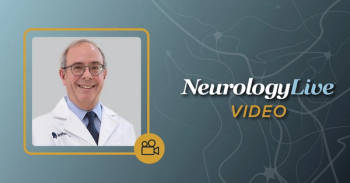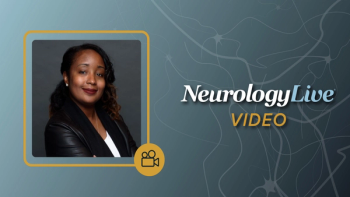
The Case for Neurorehabilitation

Neurological rehabilitation, or neurorehabilitation, can be described as the use of rehabilitation interventions to improve or maintain function and quality of life in the context of neurological conditions.
The World Health Organization defines rehabilitation as "a set of measures that assist individuals, who experience or are likely to experience disability, to achieve and maintain optimum functioning in interaction with their environments." The difficulty in summarizing rehabilitation lies in part with a variety of conditions (congenital disorders, acquired injuries, medical and surgical conditions), settings (inpatient, outpatient, home), healthcare professionals, and interventions involved in the rehabilitation process (from cognitive and motor training to vocational rehabilitation). Neurological rehabilitation, or neurorehabilitation, can be described as the use of rehabilitation interventions to improve or maintain function and quality of life in the context of neurological conditions. As a physiatrist embedded in a multiple sclerosis (MS) comprehensive care center for over 25 years, I have often reflected on how the role of neurorehabilitation needs to be better defined and optimized.
It is common to include neurorehabilitation in a comprehensive management plan after an acute neurological or neurosurgical event, such as a stroke, traumatic brain or spinal cord injury, MS relapse, or removal of a brain tumor. This is consistent with the most accepted model of rehabilitation (acute loss of function, recovery phase, then stabilization at or below the baseline functional level). In this model, the rehabilitation process is discrete in time, consistent with an episode of care, and generally aims to maximize an individual’s ability to return to their usual environment and activities.
But how does rehabilitation fit in the management of chronic disabling neurological conditions?
Disabling conditions with relatively fixed neurological deficits, whether they are congenital (as in cerebral palsy and other neuro-developmental disorders) or acquired (when the acute conditions or injuries discussed above cause chronic residual disability), often require only episodic neurological or neurosurgical care, particularly for complications such as hydrocephalus, spinal cord syrinx or tethering, or stroke recurrence. Neurorehabilitation guidelines are available for some of these conditions, and often recommend ongoing care from a physiatrist.
In progressive diseases such as MS or Parkinson’s Disease, neurological care is at the forefront, and neurorehabilitation providers are included in a comprehensive management plan. Clinical practice guidelines from various parts of the world recommend referral to rehabilitation early duringthese conditions.
In all of these chronic conditions, rehabilitation goals may include preventing or slowing down the development of functional limitations, preserving quality of life, and addressing more discrete issues (for example, managing spasticity or decreasing the frequency of falls that restrict mobility and may lead to injury). The challenge is to operationalize the use of rehabilitation services over a lifetime, during which a person’s needs and ability to participate in rehabilitation therapies will evolve, while using healthcare resources in the most cost-effective manner. Further, while specialized neurorehabilitation is preferred, it is not available or accessible to all affected individuals.
Traditional and better-known applications of neurorehabilitation include aerobic and strength exercise training, task-specific training (e.g. gait, balance, upper extremity function, speech, swallowing, cognitive training), fitting and training to the use of assistive devices, as well as recommendations for home modifications, driver rehabilitation, wheelchair/seating evaluations, and functional capacity evaluations for work accommodations and disability applications.
The growing emphasis on lifestyle modifications, particularly on the long-term benefits of maintaining an exercise routine, present yet another opportunity to involve rehabilitation professionals, considering the barriers to exercising at home or in the community faced by our patients with neurological conditions. The same applies to:
- complex symptom management, as many neurologic symptoms such as spasticity or fatigue can be managed in part through nonpharmacological approaches that entail lifestyle modifications;
- the management of comorbidities, whose role in the progression of disability has been demonstrated, particularly in MS;
- managing the effects of aging, as life expectancy with chronic neurological conditions has increased overall
Overall, emerging evidence points to the need for a more proactive engagement of neurorehabilitation in the managing of chronic neurological conditions, before severe activity limitations occur, and before a person’s ability to live safely in their usual environment is jeopardized. In a proactive approach, rehabilitation interventions can be straightforward and limited in time, with an emphasis on education and interfacing with community resources, and periodic re-evaluations to ensure adherence to lifestyle modifications and to address new challenges.
One exciting prospect lies with the potential role of neurorehabilitation in neuroprotection and neuroregeneration. While this is not a novel concept, recent evidence has yielded encouraging results. This may involve high intensity and/or high repetition exercise training, and the use of rehabilitation technology such as robotics and virtual reality. The concurrent evaluation and marketing of neurological treatments (such as biologics and stem cell therapy) that also promote neuroprotection and neuroregeneration, leads me to dream of large clinical trials combining rehabilitation techniques with other therapeutic agents, seeking a synergistic effect.
In summary, our challenge is to find optimal evidence-based ways to integrate neurorehabilitation into the lifetime management of chronic neurological conditions, and to improve our patients’ ability to access rehabilitation services, for example through tele-rehabilitation and the engagement of community partners.
Newsletter
Keep your finger on the pulse of neurology—subscribe to NeurologyLive for expert interviews, new data, and breakthrough treatment updates.




























